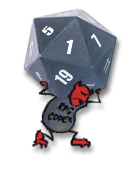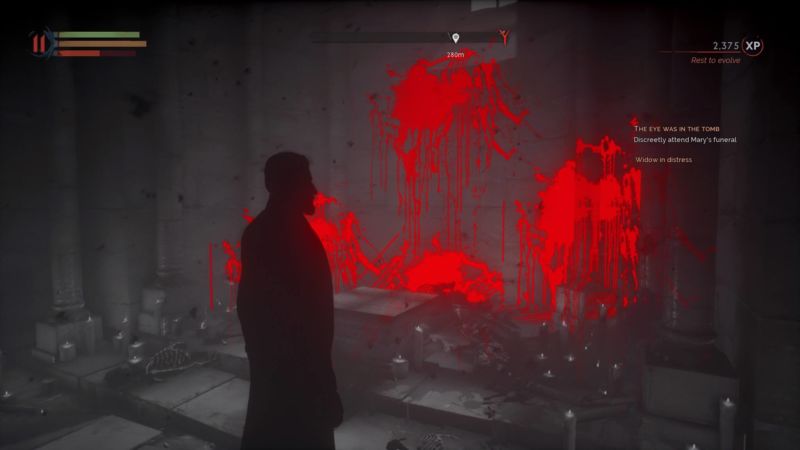Vampyr review: Dead in the daylight
Action-RPG hybrid only makes half of the combination work.
STEVEN STROM - 6/6/2018, 5:24 PM
Enlarge / My vampire sense tells me something happened here.
Steam |
Official website
Just when I would think I had completely given up on
Vampyr, it would surprise me. I’d slam my head into one clumsy, frustrating boss fight for an entire hour, then be rewarded with a lapsed anarchist’s fascinating life story. Then, just when I'd think I could peel back the layers of
Vampyr’s captivating cast all day, I'd get frustrated all over again by the unpolished presentation or slipshod action.
Vampyr takes some thick adventure game influences from
Life Is Strange developer Dontnod’s previous project.
Vampyr is indisputably at its best when it follows that series’ focus on conversations with well-constructed, interconnected non-player characters. The game only really starts to fall apart when it leans into combat, and there's far too much of that bad action to go around.
All chewed up
Believe me, I understand the desire to play with the power of vampirism with some bloody action scenes. Dr. Jonathan Reid, our protagonist vampire (despite the game’s title, the subtitles spell it without the “Y”) has all kinds of fancy-pants supernatural abilities. He can see people through walls, sculpt weapons out of blood, and mutate into a neck-munching monster.
There’s a lot of action-game potential in those kinds of supernatural abilities. It’s just absolutely miserable in practice.
Battles amount to third-person swing-fests with only the most
superficial resemblance to
Bloodborne. I probably wouldn’t even sully
Bloodborne with that comparison, except that
Vampyr takes place in an early 20th century London full of torch-waving mobs.
You can lock onto the goons and bat them with melee weapons that carry all the audiovisual impact of a pool noodle. If the camera manages to keep up, you’ll see them flail back at you with clumsy attack animations that nevertheless do way too much damage. You can try to dodge these (while managing your stamina bar, of course) but it’s exceedingly tough to gauge the attackers' range in
Vampyr’s perpetually dark environments.
Complementing combat with spells and firearms is a must. You’re limited by mana and ammo, of course, but you’ll need the extra range to stay away from bosses’ one-hit-kill-area attacks.
Something to sink your teeth into
Even if you can ignore the problems in the abysmal combat half of the game, it’s harder to ignore (or skip) the humdrum opening hour of exposition. Reid gets vamped some time just before the game starts, during the 1918 flu epidemic, and almost immediately murders his sister in a fit of paranormal thirst. What immediately follows seems like the blandest of revenge mysteries—the search for whoever set up Jon to kill a woman we get literally zero time to care about.
That thread mercifully dissolves into a much more appealing soup of local politics, scientific investigation, and intrigue among London’s vampire elite. It’s not long before Reid runs into people who understand his new condition. An immortal aristocrat introduces our hero to the supernatural, while the doctor’s fanboy hospital administrator hooks him up with a night shift.
Both sidekicks are branching-off points for the fun part of
Vampyr: getting to know every speaking NPC in the tangled open world. Everybody—from one of Jon’s mentally-ill patients to the shopkeeper who sells you crafting materials to an agoraphobic teen in the slums—has a story. You just have to be willing to listen.
At first I thought the Londoners were fairly one-dimensional sketches. But teasing out snippets of those stories unlocks hints about
other citizens. Unlocking the secrets of how each character feels about their coworkers and relatives can feel like a grind at times, though. That’s in part because Jon tends to break the ice with the same three basic questions: how are you feeling, what’s this district like, and what do you think about this whole flu thing? The repetitive flow of every early conversation can be a bit grating.
But, much like
Life Is Strange, half the joy is in discovering that these caricatures of a particular time and place aren’t that at all. Sure, that old man is a grump, but did you know he’s only that terse because he’s part of an underground hospital and terrified the cops will shut down the operation and arrest him for communism? Did you know he left his family in Romania to fight for England’s poor? If you don’t know, you can quickly find out.
I did it for the XP
The theoretical hook here is that developing relationships with NPCs strengthens their blood… or something. In addition to learning about every member of the cast, Jonathan can suck them dry nearly any time. Killing these deeply known cast members is the number one source of experience points in
Vampyr; killing nameless fodder enemies and even completing quests deliver a pittance by comparison. And because the game’s skill upgrades get very expensive very quickly, the best way to power through combat is with at least a little bit of premeditated murder.
That level of in-game cruelty was so tricky for me that I barely killed anybody. The appeal of
Vampyr is learning that its people are people. They have faults and strengths and typically people who care about them—with those relationships neatly arranged in reminder menu graphs. Even if I didn’t like someone, odds are they’re related to someone I
do. Taking the time to ripen Jon’s prey only makes pulling the trigger on his bloodlust increasingly difficult. That said, I didn’t mind taking out one racist dude who blamed the flu epidemic on “savages,” popping him like a tasty juice box. Sometimes vampirin’ is thirsty work.
It’s also, unfortunately, sloppy work. I don’t just mean the combat.
Vampyr is rough around nearly all its edges. As much as I love the digital conversations, the gossipers themselves look bad. Their models animate like drunkards and have a habit of looking over Jon’s right shoulder at all times. It’s funny when it’s not slightly creepy.
More egregious issues include a bug that caused an NPC to simply stare at me silently. I couldn’t progress the conversation and only escaped the dialogue by mashing every button on my controller until it canceled out. Enemy AI is consistently even worse. Lure a vampire hunter to the edge of its invisible “territory” and it simply shuts down—calmly walking away as you wail on it from behind.
Say what now?
But my least favorite foible is the game’s dialogue wheel.
Vampyr uses a system similar to
Mass Effect or
Fallout 4, where dialogue options are summarized as just a few words before you say them. It also suffers the same overarching issue as those other games: it’s simply not always clear what Jon will say or do based on your options.
At one point, this confusion led to a character’s unintended death. It happened because I
thought Jon could use his vampiric powers to erase someone’s memories of the supernatural. What the choice
actually did was magically lobotomize them, sending them wandering the streets. When this poor, brain-damaged figure caught some vampirism of their own, I felt a moral need to put them out of their misery.
The stakes (pun embarrassingly intended) aren’t always that high. Usually these misinterpretations just mean Jonathan says something sarcastically that I had meant to say sincerely. Other times, it can completely close off conversational options. Don’t get me wrong—I’m all for unexpected consequences in choice-driven games like this. But that shouldn’t mean making the wrong, irreversible decision based on muddy language.
For all my horror at damaging the brain of a character I genuinely liked, it was fascinating to watch
Vampyr’s communities be impacted by this deadly decision. As illness started spreading without this character around, I had to pick up the slack by crafting medicine or risk letting a district fall into violent ruin. A later boss even admonished me for the act. Being held mechanically responsible for my mistake felt powerful and scary at the same time. In its best moments the game made me remember that I screwed up, big time.
The problem is that fully half the game isn’t composed of those moments. The other half is made of outright messy combat that ranges from bearable (during random street fights) to excruciating (during the too frequent, too similar, and too long boss battles). The lack of polish
throughout the game doesn’t do it any favors, either.
Put it together, and I don’t know if I can recommend
Vampyr. I think it’s fascinating. I want to see more games that handle this plurality of communities—communists, anarchists, street gangs, disaster tourists, and soup kitchens—dealing with the same problems in the same space. I love peeling away at the story. I just don’t enjoy everything in between. Maybe I’ll be less conflicted about the sequel…
The good
- Tons of interesting characters to cozy up to (and maybe murder).
- Interesting blend of scientific mystery and supernatural drama.
- Some fun vampire powers to play with.
The bad
- Bugs, bad A.I., and unclear dialogue choices add up to a frustrating lack of polish.
- Combat is miserable; bosses in particular.
- Some characters and plot beats feel hollow without time to build up.
The ugly
- Accidentally lobotomizing a comrade.
Verdict: A bundle of great ideas and characters, shackled by some abysmal mechanics. Try it, or buy it on sale.




















![Glory to Codexia! [2012] Codex 2012](/forums/smiles/campaign_tags/campaign_slushfund2012.png)
![Have Many Potato [2013] Codex 2013](/forums/smiles/campaign_tags/campaign_potato2013.png)
![The Year of Incline [2014] Codex 2014](/forums/smiles/campaign_tags/campaign_incline2014.png)






















